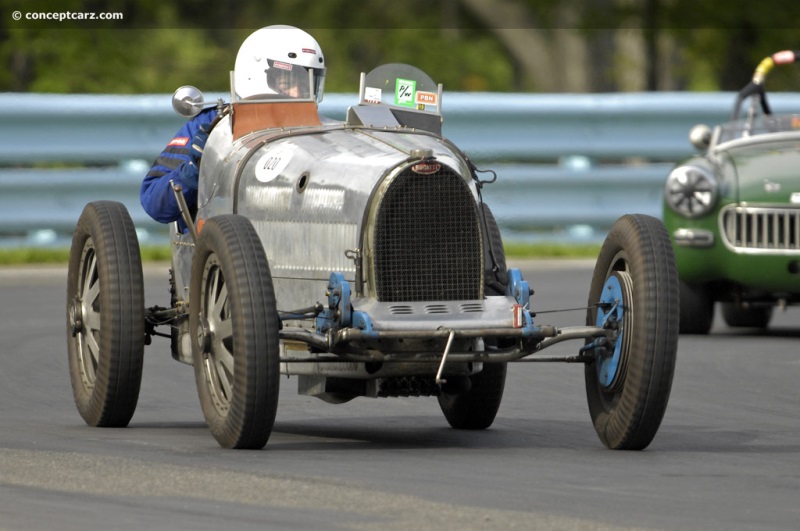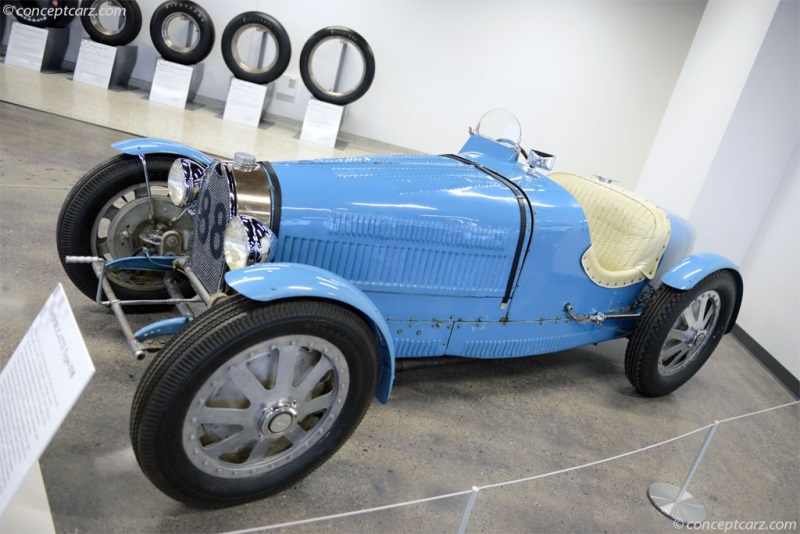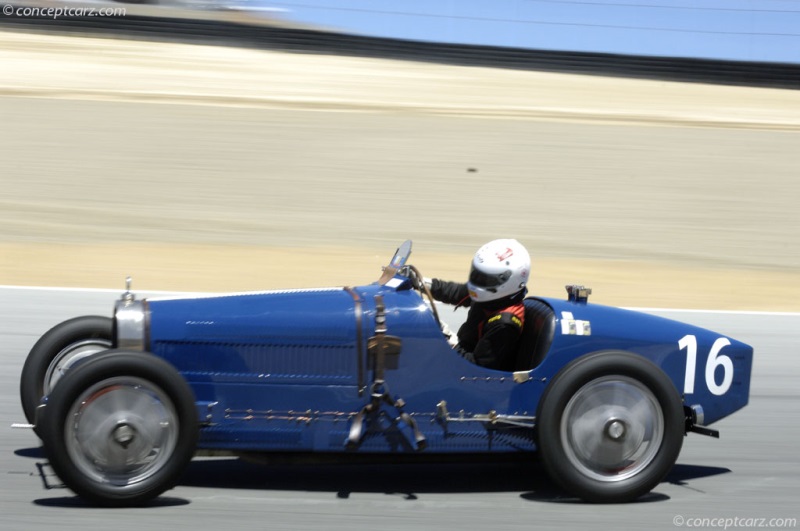The final iteration of the Bugatti Type 35 was the Type 35B. It bore the same 2.3-liter, eight-cylinder motor of the earlier Type 35T, but was equipped with a supercharger that was similar to the one in the Type 35C, albeit slightly larger and more powerful. This endowed the Type 35B with a zero-to-sixty mph time of six seconds with a top speed of 125 mph.
Grand Prix Racer
Chassis #: 4955
View info and historyEttore Bugatti had firmly established an unrivaled reputation for building cars with outstanding performance by the early 1930s. The world's greatest racing drivers enjoyed countless successes aboard the Molsheim factory's products while many of the world's elite selected them for their everyday transport. At the heart of this success and popularity was the 1,991cc straight-eight engine derived from that of the Type 30 but incorporated five roller/ball main bearings instead of three and an improved lubrication system. Each cylinder's three valves were actuated by a single overhead camshaft. The 2,262cc 8-cylinder engine used a single Zenith carburetor and a Roots-Type supercharger to produce an estimated 130 horsepower at 5,500 RPM. The engine was backed by a four-speed manual gearbox. The engine was placed within a conventional chassis with leaf springs at the front and quarter elliptics at the rear, and rode on a hollow front axle and alloy wheels. Cleverly integrated brake drums provided the stopping power. The Type 35 made its racing debut in August 1924 at the Grand Prix de l'ACF at Lyon-Givors, where the factory team of five cars was plagued by tyre troubles and could achieve no better than 7th place at the finish. This debacle was followed by what is arguably the most successful racing career of all time, commencing with winning the inaugural World Championship for Manufacturers in 1926 and securing countless victories for privateers. They would enjoy over 1,000 victories in a variety of competitions throughout Europe, and it has been said that the Type 35 averaged 14 race wins per week and, by the close of 1926, the model had already set 47 individual speed records. The Type 35 won the Monaco Grand Prix three times, and the Targa Florio five times. The Bugatti's success in competition attracted the best drivers of the day – Nuvolari, Varzi, Divo, Costantini, Benoist, Chiron, Dreyfus, and Williams all contributed to the legend of the Type 35.The Type 35A arrived in May 1925 with a three plain bearing engine with smaller valves, and coil ignition like the Type 30. Its output was less than the original Type 35 and so was its price. Due to the reduced price tag, the public gave it the nickname, the 'Tecla' after a famous maker of imitation jewelry. A total of one-hundred thirty-nine examples were built.
Grand Prix Racer
Chassis #: 4955
View info and historyThe Type 35C used a Roots supercharger and a single Zenith carburetor which boosted output to 128 hp. In this guise, it won the French Grand Prix at Saint-Gaudens in 1928, and at Pau in 1930. A total of five examples were built by the factory. The Type 35T, also known as the 'Targa Florio,' was introduced in 1926 at the Targa Florio race. Its 2.3-liter engine used a longer 100mm stroke and since Grand Prix racing regulations limited engine capacity to 2.0-liters, its racing applications were limited. A total of thirteen examples were built. The final version of the Type 35 series was the Type 35B, originally named the 'Type 35TC', and a total of 45 examples were built. Altogether, the Bugatti works in Molsheim, France produced approximately 350 Type 35s.
Grand Prix Racer
Chassis #: 4955
View info and historyThe Type 35 had a 2400mm (94.5-inch) wheelbase and a length of 3680mm (144.9 inches). Its chassis and body were used for the Type 37 sports car but equipped with a new 1.5-liter straight-4 cylinder engine. It had a SOHC three-valve design and produced approximately 60 horsepower. This engine was later used in the Type 40. Bugatti built 290 examples of the Type 37 with 67 of those being the supercharged Type 37A with approximately 90 horsepower. The Type 39 was visually similar to the Type 35C but with a smaller 1.5-liter engine with a shorter-stroked crankshaft. Its stroke was reduced from 88mm to 66mm, and some examples used regular while others had ball bearings. A total of ten examples were built.The Bugatti Grand Prix cars were designed to be driven hard were known for their reliability, performance, and overall motoring panache.
by Daniel Vaughan | Oct 2021
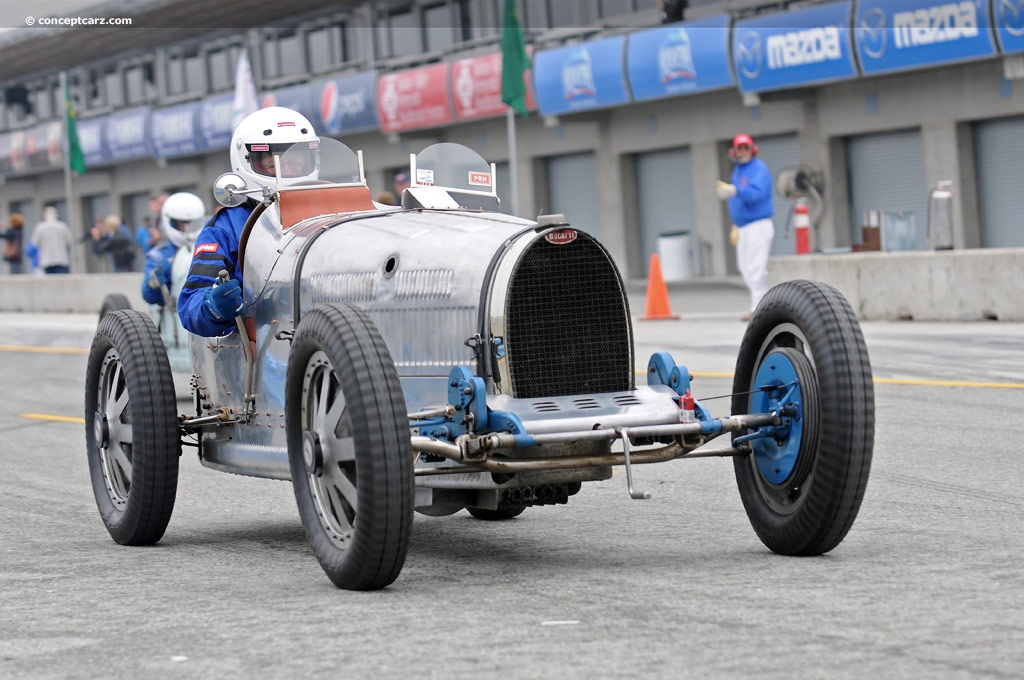
Grand Prix Racer
Chassis #: 4955
View info and history
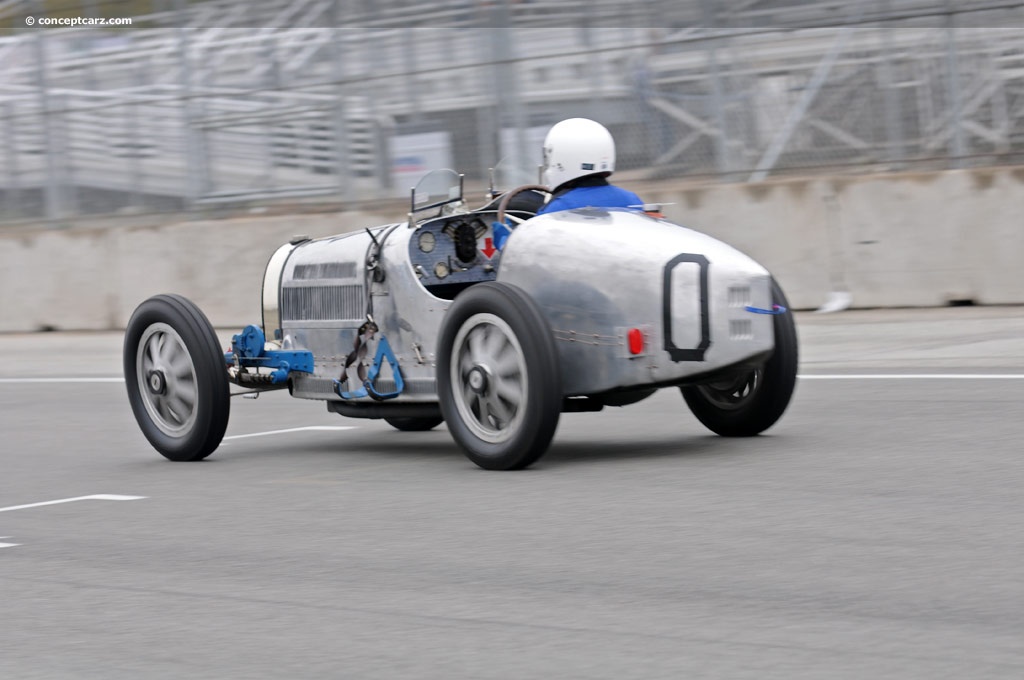
Grand Prix Racer
Chassis #: 4955
View info and history
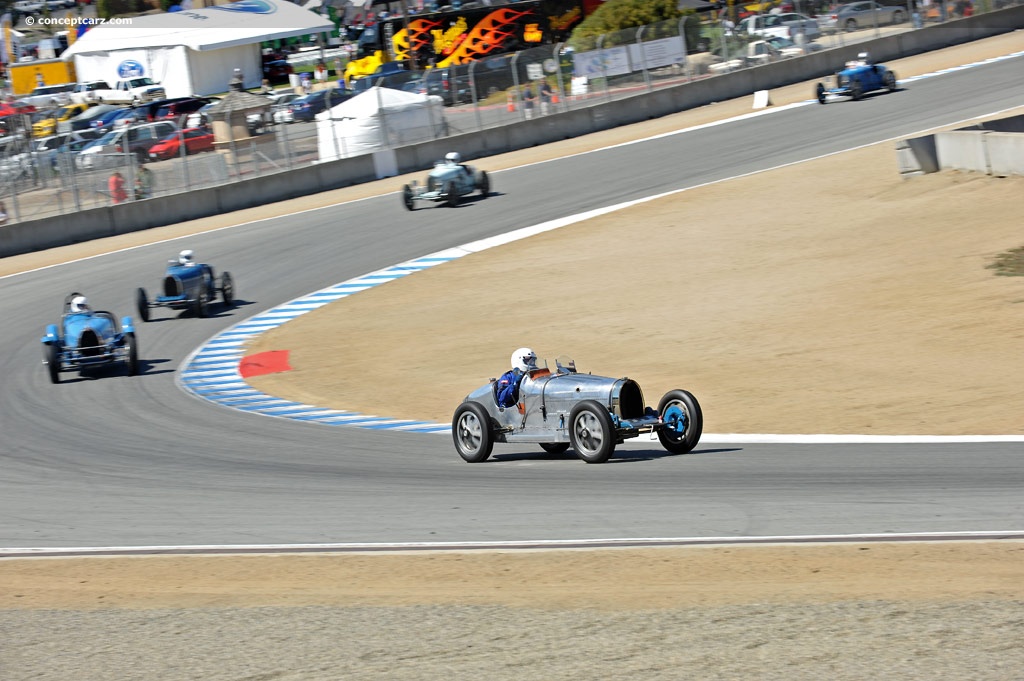
Grand Prix Racer
Chassis #: 4955
View info and history
by Daniel Vaughan | Oct 2021
Related Reading : Bugatti Type 35 History
The Bugatti Type 35 is regarded by many as one of the most beautiful pre-war racers from the legendary Bugatti Company. Its beauty is matched by its accomplishments, is one of the most successful pre-war racer winning over 1000 races and capturing the 1926 Grand Prix World Championship with 351 races. During that two-year period, it also claimed 47 records. From 1925 through 1929, the Bugatti Type....
Continue Reading >>
Continue Reading >>
THE LEGENDARY BUGATTI TYPE 35 – THE WORLD'S MOST SUCCESSFUL RACING CAR
Light, strong, fast and elegant. The Bugatti Type 35 is one of the most successful racing cars of all time. And deservedly so the French manufacturers open-top sports car secured over 2,000 victories between 1924 and 1930. Today, the Type 35 is a legend in international motor sport. And a whole lot more besides. The Bugatti Type 35 is one of the icons of Bugattis rich history and tradition.....
Continue Reading >>
Continue Reading >>
1929 Bugatti Type 35B Vehicle Profiles
Recent Vehicle Additions
Related Automotive News

First Victory At The First Grand Prix In Monaco In 1929
Retrospective Ninety Years ago Bugatti Won the First Grand Prix in Monaco
Molsheim, April 15th, 2019. When the start flag lowers at 1330, the racing cars roar. Among others, a Bugatti Type 35 B stands at the front. A familiar image for...

A motorsport pioneer celebrates a special anniversary: 100 years of the trailblazing Bugatti Type 32 'Tank'
Bugatti is known across the world for visionary engineering and ingenious designs, and today the brand celebrates the official centenary of the racing debut of one of its most innovative cars the Type 32 Tank. This streamlined racing car was to lay...

Bugatti Type 59 Sports – Sporting the Battle Scars of Early Grand Prix Racing
The first of the six existing Type 59 Sports racing cars – produced back in the 1930s – still exists today in near-original condition and is considered an invaluable surviving specimen of Bugattis successful racing history.
Scuffed leather seats...

90 Years Le Mans – Bugatti Dominates The French Grand Prix 1929
Five Bugatti Type 35 finish in the first six. Williams wins.
Molsheim, 27. June 2019. It is a demonstration of performance with no equal amongst the six first through the finish line are five Bugatti drivers. 1929 was the year for the...

120 years of motor sport at Mercedes-Benz take centre stage at the Goodwood Festival of Speed 2014
Addicted to Winning at this years Goodwood Festival of Speed, Mercedes-Benz looks back on some fascinating racing victories of the last 120 years
The unique motor sport heritage of the Mercedes-Benz brand is being celebrated with an exclusive i...

Techno Classica 2014: more than 30 racing cars to celebrate 120 years of Mercedes-Benz motor racing history
Cars that were the heroes of magical moments put their stamp on this high-powered, most comprehensive show presentation
With more than 30 vehicles, Mercedes-Benz Classic presents motor racing history in all its unique breadth and depth
120 years o...





























